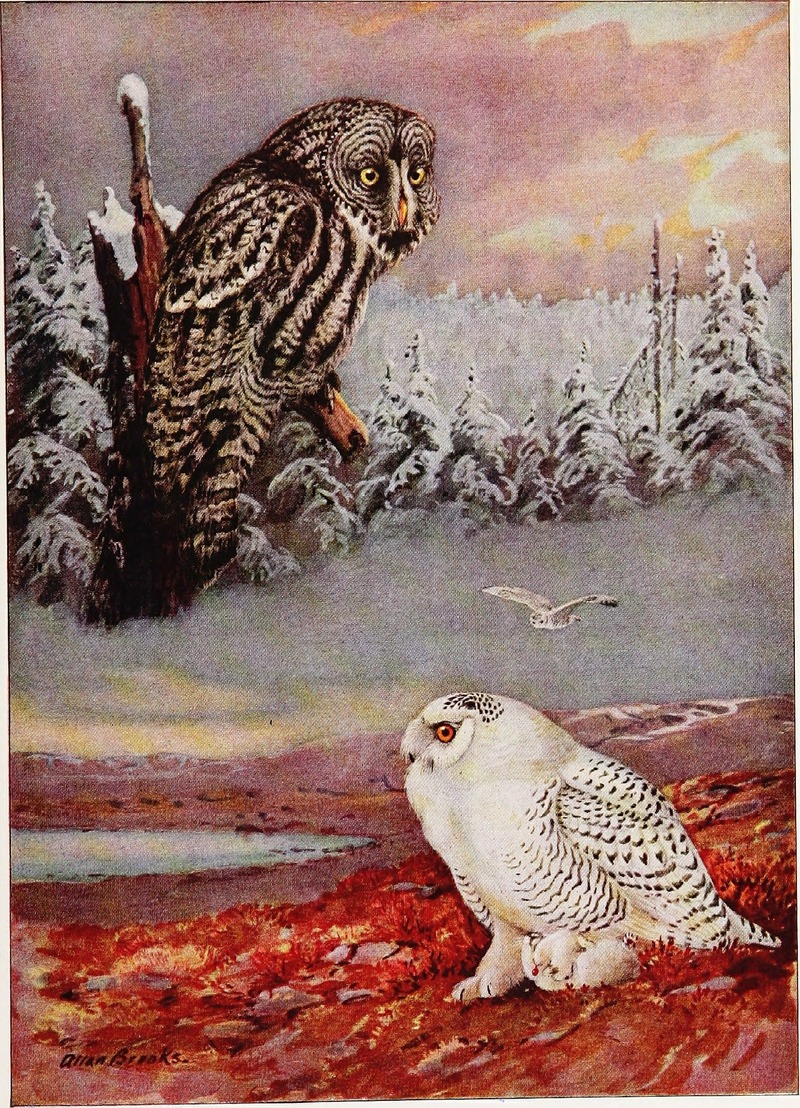Strix nebulosa, Bubo scandiacus Description
English: Strix nebulosa ; Bubo scandiacus
Title: (Articles about birds from National geographic magazine)
Identifier: cu31924090304738 (find matches)
Year: (19--?)-(193-?) ((190s)
Authors:
Subjects: Birds
Publisher: Washington, D. C. : National Geographic Society
Date 1825
Source https://www.flickr.com/photos/internetarchivebookimages/20790578442/
Source book page: https://archive.org/stream/cu31924090304738/#page/n208/mode/1up
Author Internet Archive Book Images
Source: https://commons.wikimedia.org/wiki/File:Articles_about_birds_from_National_geographic_magazine_((19-%3F)-(193-%3F))_(20790578442).jpg
The great grey owl or great gray owl (Strix nebulosa) is a very large owl, documented as the world's largest species of owl by length. It is distributed across the Northern Hemisphere, and it is the only species in the Strix (genus) found in both Eastern and Western Hemispheres. In some areas it is also called Phantom of the North, cinereous owl, spectral owl, Lapland owl, spruce owl, bearded owl, and sooty owl.
The snowy owl (Bubo scandiacus) is a large, white owl of the typical owl family. Snowy owls are native to Arctic regions in North America and Eurasia. Males are almost all white, while females have more flecks of black plumage. Juvenile snowy owls have black feathers until they turn white. The snowy owl is a ground nester that predominantly hunts rodents.
